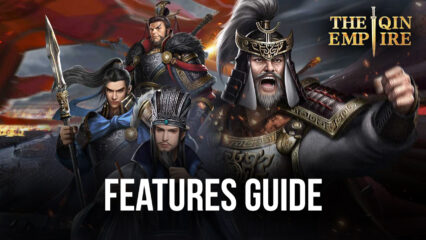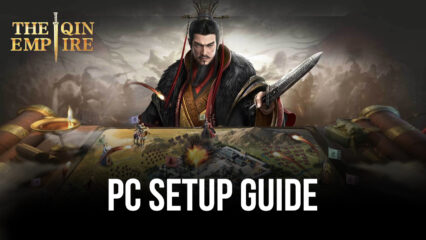The Qin Empire Tips and Tricks for Developing Your Cities and Progressing Quickly
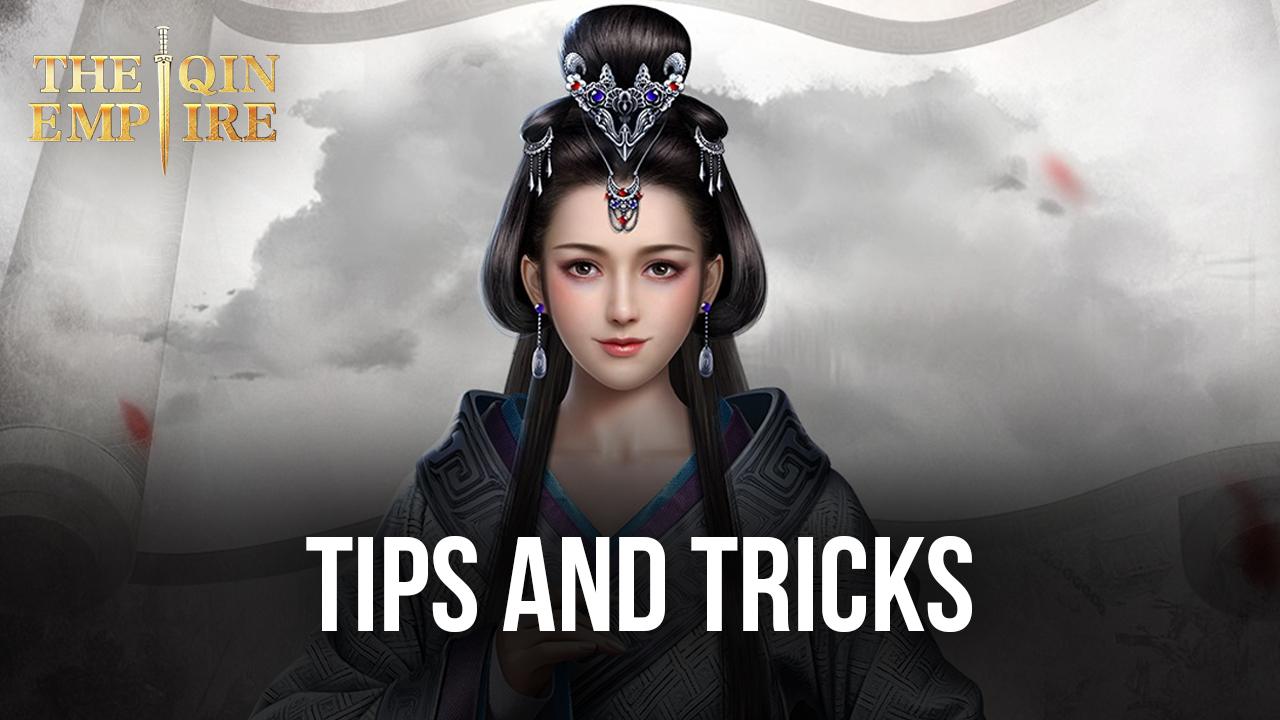
The Qin Empire is a strategy conquest mobile game with several unique elements to find and discover among its rough edges and shoddy localization. And while the game isn’t very difficult to understand and play, it’s these translation issues that constantly work against our fun and enjoyment of the game.
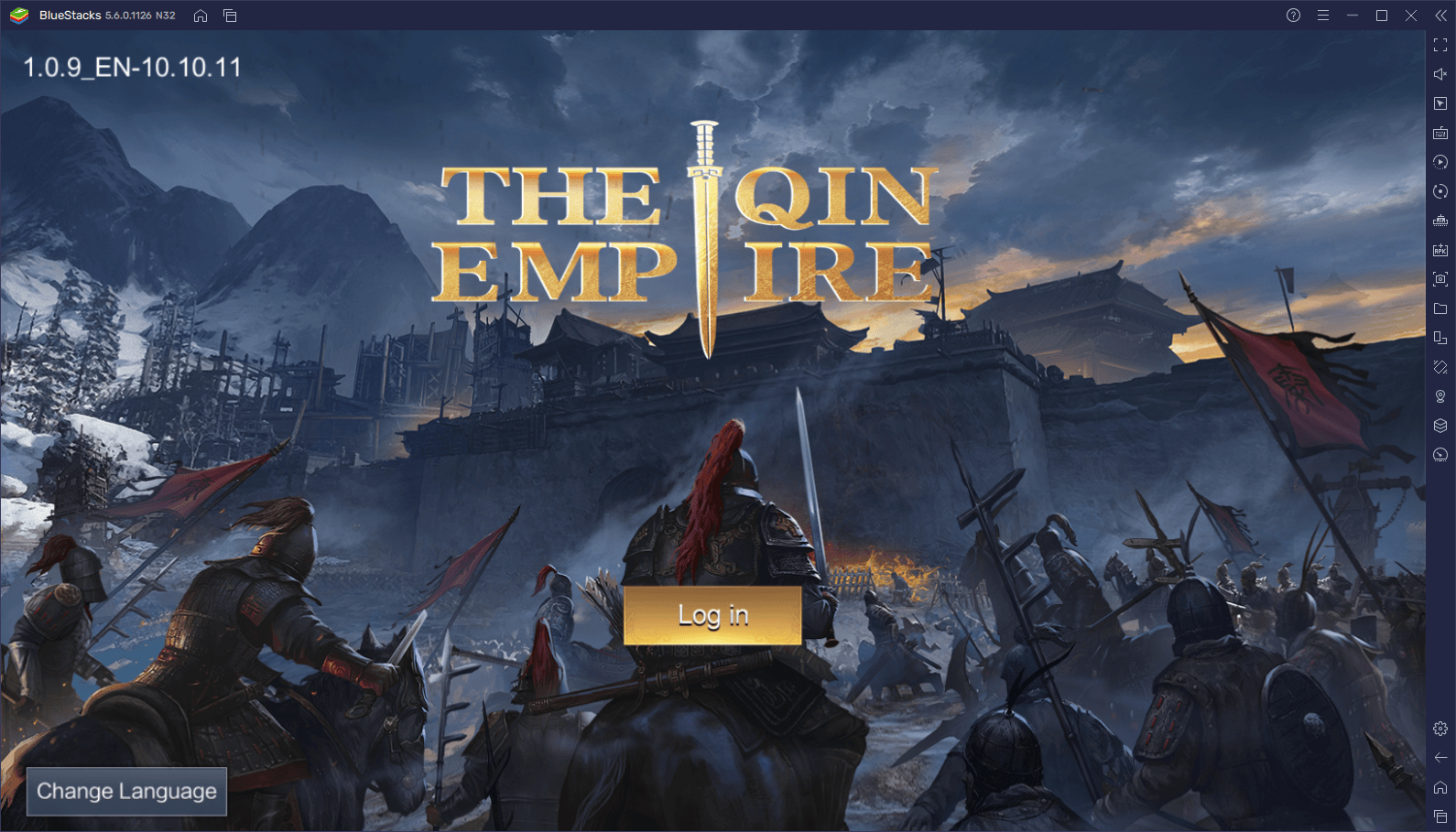
If you’re like us and are interested in getting into The Qin Empire but feel that it can be quite confusing to understand at a glance, then these tips and tricks are for you. In this guide, you’ll find a few handy pointers that might help to get a good start in this mobile game.
Play on BlueStacks to Get the Best Experience
BlueStacks is the best Android app player in the market, designed to give you the optimal experience when playing any of your favorite mobile games on PC, and The Qin Empire is no exception.

When you play on BlueStacks, you’re not only gaming on your large computer monitor and with the best performance that only your superior PC hardware can provide, but you’re also getting access to the best tools and features to improve your gameplay. Some of these tools include the Keymapping Tool, which lets you control your games with your mouse and keyboard; the Instance Manager, which lets you play on multiple accounts at the same time, and the Macro Recorder, through which you can automate many of the most tedious and repetitive tasks.
Check out our PC setup guide for The Qin Empire to learn how to get started with playing this mobile game on your computer.
The Main Missions Are a Great Source of Guidance
The Qin Empire is admittedly a very confusing game, a fact that is compounded even further by the questionable localization efforts. It’s very hard to know what all the stuff on your screen means, or what to do at any given moment. And while you’ll slowly learn about the former as you play, you can get lots of guidance for the latter in the form of the main chapter missions, which you can find on the lower-left corner of your city screen, and will often indicate what you should be doing at any given moment.

If anything, these missions will help you to set up your empire initially and will show you the basics of the game so you can continue progressing at your own pace afterward. Still, we strongly suggest working on these missions as they will help to improve your understanding of the mechanics of The Qin Empire.
Occupy and Annex Land to Improve Your Production
Speaking of which, one of the first mechanics that may appear quite confusing, at least if you have experience with any other strategy conquest games, is the land occupation feature in the Qin Empire.
In a nutshell, instead of having to build lots of production buildings to bump your resource generation, you can send your soldiers to occupy and annex land to your empire. And depending on the contents of the tiles that you annex, you may perceive an increase in the production of specific resources. For instance, if you occupy a tile with farmland, you will start producing more grain every hour. The same goes for iron mines and iron ore; quarries and stone, and forests and wood.
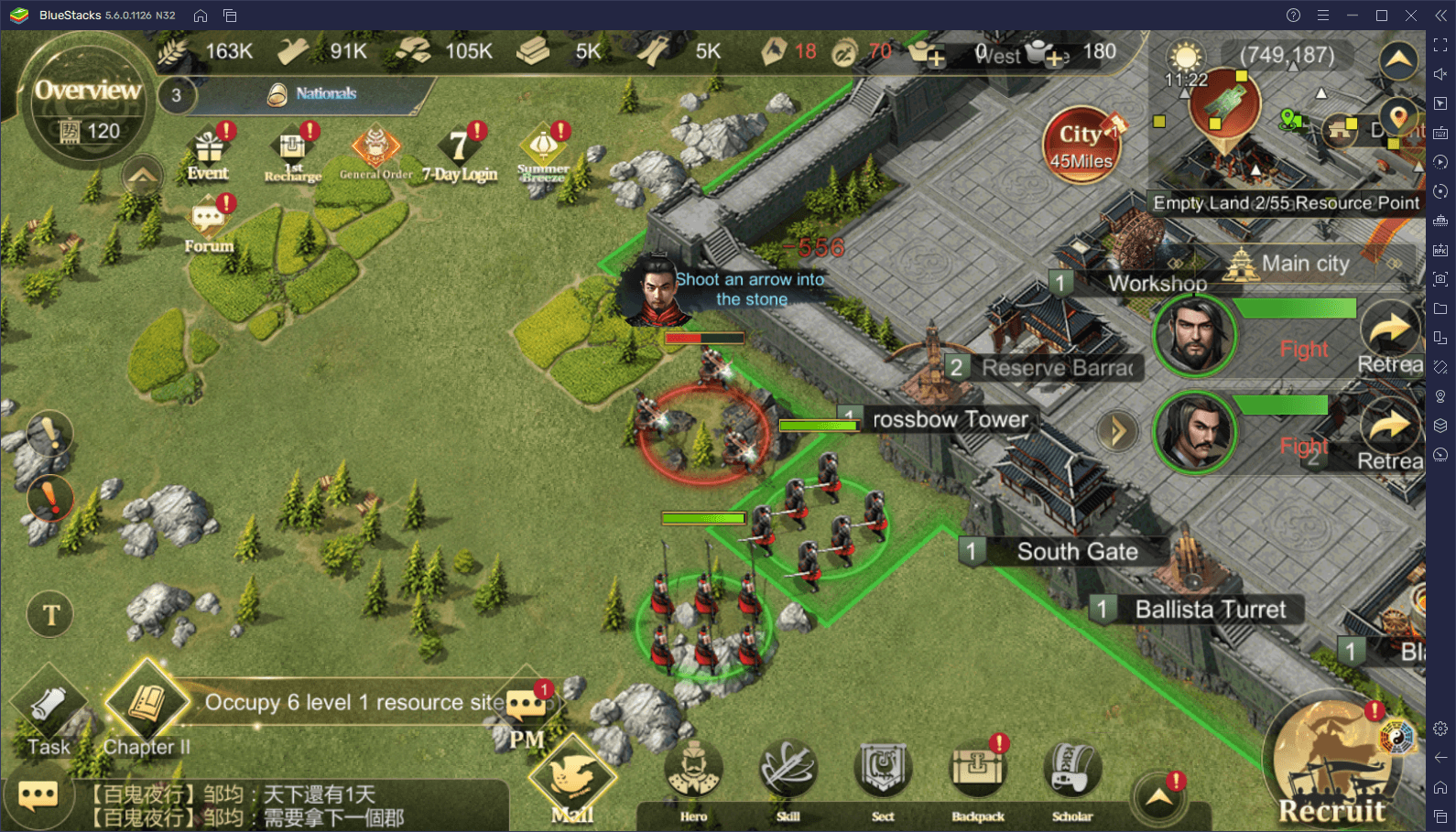
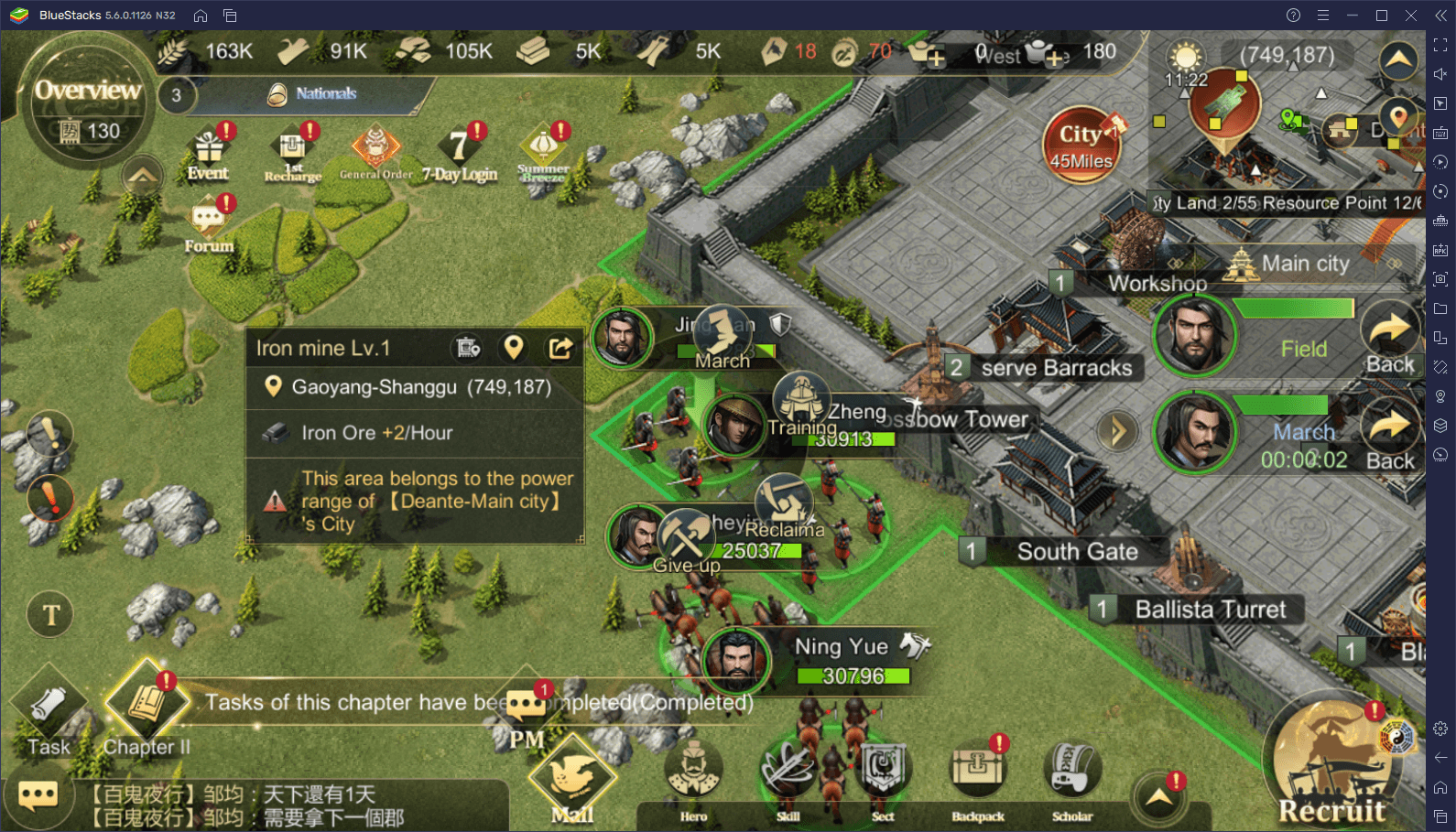
The maximum number of land that your empire can have at any given moment is determined by your role level.
Improve Your Barracks to Increase Your Reservist Limit
In The Qin Empire, you don’t have to constantly train troops at first, unlike in other strategy conquest games. Instead, your city has a number of reservists available at all times, which can be assigned to your heroes when they’re deployed in their respective barracks. The number of these reservists is determined by the number of Reserve Barracks in your town, as well as their levels—the more barracks and the higher their levels, the more reservists you’ll have available in town.

Keep in mind, however, that even if you have a large number of reserve troops available, these are ineffective unless assigned to a hero’s squad. In this sense, it’s not wise to expand your reserve troops beyond what you need at any given moment. Instead, you should first focus on upgrading your heroes to augment the number of troops they can lead into battle at any given moment. This is one of the best ways to increase your power in the field.
Manage Your Heroes Adequately to Improve Your Combat Effectiveness
Aside from the number of troops they can take to battle, there are other aspects about your heroes that you should always keep in mind whenever you’re looking to optimize your combat prowess.
Like in many other games with gacha RPG elements, your heroes in The Qin Empire have their own stats and abilities. Additionally, in this game, your heroes also have their own troop types, which determine what kind of soldiers they will bring into battle. This is different from their troop limit for one main reason. While the troop limit determines their overall power, the troop type will affect the soldiers’ combat properties, making them ideal for certain situations. Moreover, the units within a hero’s squad also have their own stats, which also play an important role in their effectiveness.
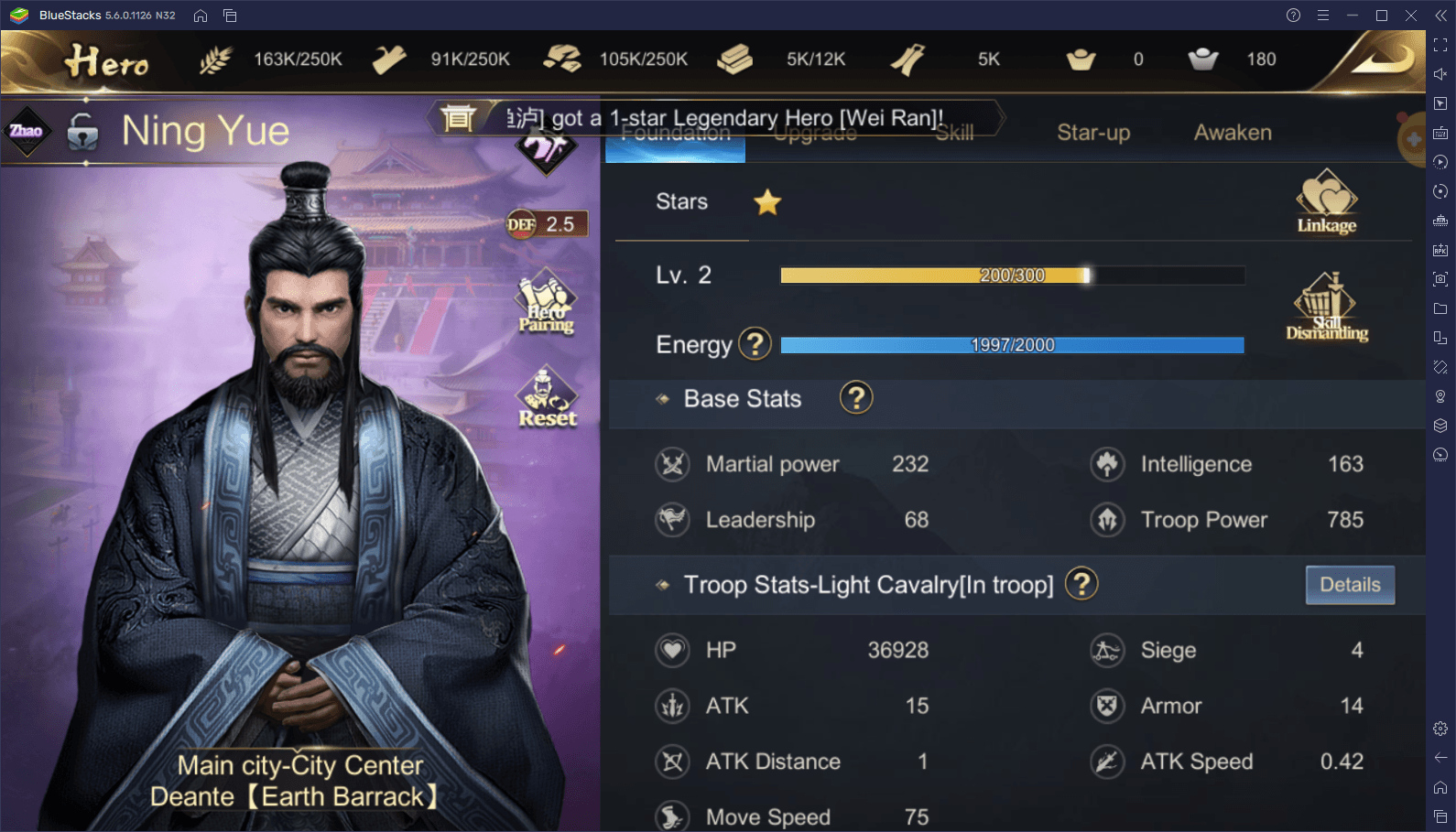
Here’s a quick rundown of hero and troop stats:
Hero Stats
- Martial Power: Affects martial power damage.
- Intelligence: Affects both martial power damage, and defense.
- Leadership: Affects maximum soldiers within a hero’s army.
- Troop Power: Represents the current number of soldiers currently within the hero’s army.
Troop Stats
- HP: The current health of the entire squadron, which is directly proportional to the hero’s current troop power.
- Siege: The damage that the troops can do to city buildings when attacking an enemy base.
- ATK: The damage done by regular attacks and martial powers.
- Armor: Affects the troops’ resistance to regular and martial attacks.
- ATK Distance: Determines the range at which the troops can attack.
- ATK Speed: Affects the rate in which the troops attack.
- Move Speed: Determines how fast units can march on the field.
Aside from these stats, a hero’s units can fall into several categories, including Infantry, Cavalry, and Gear. Further, each category has multiple types of units such as Crossbowmen, Strategists, Archers, Shielders, Rangers, Bow Cavalry, Chariot, Ballistae, and so on.
These are all elements you should always keep in mind when deploying your troops, either to occupy land, attack other players, or simply when setting up the defenses of your empire.


